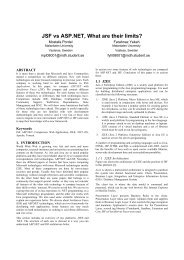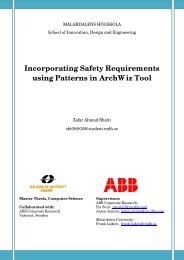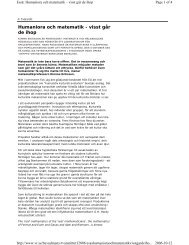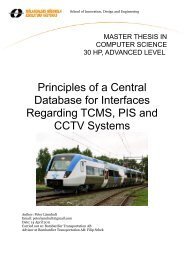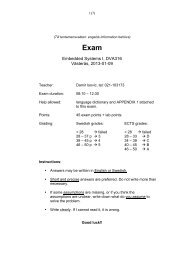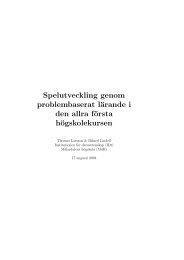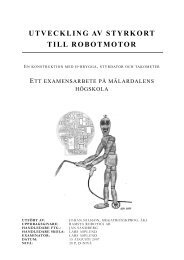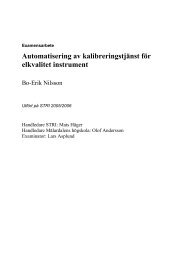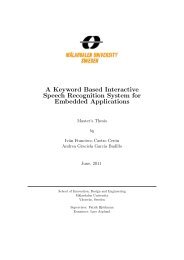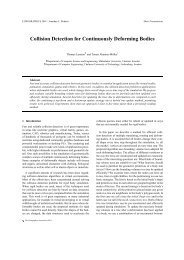Introduction to Quartus® II
Introduction to Quartus® II
Introduction to Quartus® II
Create successful ePaper yourself
Turn your PDF publications into a flip-book with our unique Google optimized e-Paper software.
CHAPTER 9: TIMING CLOSURE<br />
USING LOGICLOCK REGIONS TO ACHIEVE TIMING CLOSURE<br />
■<br />
■<br />
■<br />
■<br />
Perform physical synthesis for combinational logic: Directs the<br />
Quartus <strong>II</strong> software <strong>to</strong> try <strong>to</strong> increase performance by performing<br />
physical synthesis optimizations on combinational logic during fitting.<br />
Perform register duplication: Directs the Quartus <strong>II</strong> software <strong>to</strong><br />
increase performance by using register duplication <strong>to</strong> perform physical<br />
synthesis optimizations on registers during fitting.<br />
Perform register retiming: Directs the Quartus <strong>II</strong> software <strong>to</strong> increase<br />
performance by using register retiming <strong>to</strong> perform physical synthesis<br />
optimizations on registers during fitting.<br />
Physical synthesis effort: Specifies the level of effort used by the<br />
Quartus <strong>II</strong> software when performing physical synthesis (Normal,<br />
Extra, and Fast).<br />
The Quartus <strong>II</strong> software cannot perform these netlist optimizations for<br />
fitting and physical synthesis on a back-annotated design. In addition, if you<br />
use one or more of these netlist optimizations on a design, and then backannotate<br />
the design, you must generate a Verilog Quartus Mapping<br />
File (.vqm) if you wish <strong>to</strong> save the results. The Verilog Quartus Mapping File<br />
must be used in place of the original design source code in future<br />
compilations.<br />
f<br />
For Information About<br />
Achieving timing closure using netlist<br />
optimizations<br />
Refer To<br />
Netlist Optimizations and Physical<br />
Synthesis chapter in volume 2 of the<br />
Quartus <strong>II</strong> Handbook<br />
Using LogicLock Regions <strong>to</strong> Achieve<br />
Timing Closure<br />
You can use LogicLock regions <strong>to</strong> achieve timing closure by analyzing the<br />
design in the Timing Closure floorplan, and then constraining critical logic<br />
in LogicLock regions. LogicLock regions are generally hierarchical, giving<br />
you more control over the placement and performance of modules or groups<br />
of modules. You can use the LogicLock feature on individual nodes, for<br />
instance, by assigning the nodes along the critical path <strong>to</strong> a LogicLock<br />
region.<br />
176 ■ INTRODUCTION TO QUARTUS <strong>II</strong> ALTERA CORPORATION



